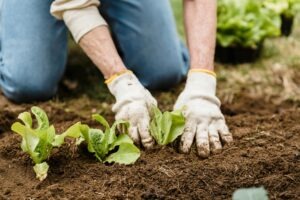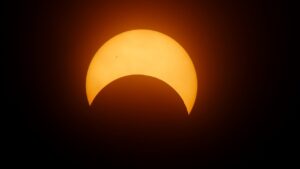
People of all ages watch the brilliantly colored insects with awe and wonder at Butterflies in the Garden. What many don’t realize is that while we value butterflies for their beauty, they also play an important role in the ecosystem. Along with bees, birds and various other insects, they help flowering plants reproduce.
“Humans love flowers and butterflies because they are beautiful,” says Conservation Botanist Megan O’Connell. “But both plants and insects are performing a critical job.”
Pollination Basics
Within a flower, plants have two primary structures. The stamen produces pollen, a powdery substance that contains genetic information. The pistil contains ovaries that also hold genetic information. When pollen lands on the pistil, the plant moves that pollen to the ovaries. The genetic information combines in the process of fertilization, and the plant produces seeds that will grow new plants.
“This is a simplified description of a complicated process,” says O’Connell. “In nature, some flowers only have stamens, or only have pistils, or vary in other ways. But it gives you the basic idea.”
Plants can be fertilized from their own pollen; this is called self-pollinating, and we discussed it in last month’s issue of the newsletter. Plants can also be fertilized with pollen from other plants of the same species; this is called cross-pollination, and it brings many benefits to the plant.

For example, cross-pollination helps create genetically diverse plant populations, which can help the plant survive in challenging conditions or if under attack by pests. Some plants might die, but other plants might have genetic advantages that allow them to survive. The seeds produced by cross-pollination are often larger and healthier than those produced by self-pollination. Some plants will only produce fruit when they are cross pollinated.
The Role of Butterflies and Other Pollinators
Pollen can spread in many ways. The wind can distribute pollen for miles. (Some of that pollen might wind up in a human nose or throat, where the human immune system might view harmless grains as a threat and start fighting them. Hello, pollen allergies.)
Birds and insects are critical pollinators; in fact, more than 80 percent of land plants are pollinated by animals such as butterflies. Pollen sticks to the bodies of pollinators when they feed on nectar, a sugary fluid produced by flowering plants to attract pollinators. Flowers benefit when they are visited by many pollinators, so they have evolved ways to attract birds and bees. The bright colors and showy petals of flowers serve as advertisements to pollinators promising rich nectar within.
Bees do most of the work of cross-pollination, but the contribution of birds and butterflies can’t be dismissed. In fact, scientists were recently surprised by how much butterflies contributed to the pollination of cotton fields in south Texas. In an article published in Science, researchers estimated butterflies contributed $120 million-worth of pollination to cotton farmers.

Butterfly populations are in decline across the world, primarily due to habitat loss, and not only cotton fields could suffer if species are lost. “Butterflies are important indicators of the health of the environment,” says O’Connell. “Healthy ecosystems with large native plant populations attract butterflies. You know something has gone very wrong in a location that butterflies avoid.”
“Butterflies are also part of the food chain. Both caterpillars and butterflies are important food sources for many creatures, especially birds,” O’Connell continues. “And they have intrinsic value as part of the natural world.”
As you visit Butterflies in the Garden, keep in mind that in the wild, these glittering insects have important jobs promoting pollination and supporting plant life on our planet.







